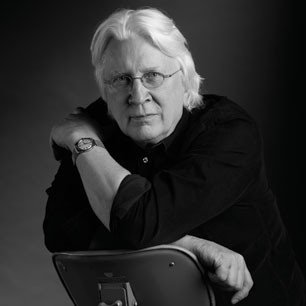Touring the Forest with Theresa Kishkan
Mnemonic: A Book of Trees, by Theresa Kishkan, Goose Lane Editions, Fredericton, NB, 2011, pb. $19.95, 246 pages.
Theresa Kishkan is the sort of human being I’ve spent my life avoiding. It’s not out of any particular dislike, although female poets who wear long dresses and use the Latin words for plants have never been among my favourite fellow humans. It’s more the way that cats avoid dogs, and vice versa: a fundamental disagreement about the way the world works.
Then there’s her husband, John Pass, also a poet. I’ve long found his admittedly-skilled work incomprehensible –no, wait, the right word is inconsequential—in the same cats-versus-dogs way. He’s a walking perennial garden, where I can’t look at a plot of land, however small, without trying to figure out what you’d need to do to grow tomatoes.
So when Kishkan’s publisher sent me her Mnemonic: a book of trees and I opened the package and saw what it was, it was like a book rocketed in from Mars, even with the highly complimentary blurb from Terry Glavin, a writer I both respect and like. I let the book sit for a couple of days, hoping the Martians would decide it was all a mistake and take it back. Then I ran two tests on it, both of which you might find strange, but which are fairly characteristic of the way I see the world. First I checked the bibliography to see if Wendel Berry was listed anywhere. (I don’t have to explain that, do I?) Then I read the chapter on pine trees, which took a while to locate because Kishkan uses the Latin term for pines. The test here was to see if she’d noticed that most of the pines in British Columbia were now dead.
She passed both tests. No Wendel Berry, the world’s most pompous, humourless, given-to-sinus-headache-inducing-homilies nature writer. Even better, Kishkan’s chapter on pines was fully cognizant of the pine-beetle infestation, although for her it was more a sensory tragedy than the ecological and human calamity I see it as. But it was also pretty interesting.
Anyway, I read the whole book. It’s a book with some faults, and I don’t just mean the bumptious overuse of Latin or the use of the term “trembling aspens” over “stinking poplars,” which where I come from are trees with so much tannic acid in them they repel bugs, and make excellent chopsticks, neither of which uses Kishkan’s sensory array is equipped to register.
But the truth is, her sensory array is both complicated and profoundly educated, and if you can get over the rhetorical pomp and the sometimes insight-arresting sensitivity, there is an expressive richness to this book that’s quite a lot more than simply charming.
One gets the sense of a woman who wasn’t ever quite certain she was beautiful—and still isn’t sure—but has made a life filled with beauty and the determination to perceive the beautiful. The book’s most compelling chapter is Arbutus menziesii, ostensibly on the subject of the Pacific Arbutus which inhabit the dryer niches of the Northwest coast, but is anchored charmingly around passages from Cennino D’Andrea Cennini’s The Craftsman’s Handbook (written somewhere around 1437), which offers advice about how to construct an oil painting but also offers some fairly hilarious advice about women’s cosmetics. But what the chapter actually provides is a remarkably subtle meditation by Kishkan about her own body and it’s intermittent brushes with beauty, most of which are recorded through the eyes of others. Across the chapter she is by turn candid and indirect, often at the same time, and once you settle into the realization she’s not trying to convince you that she’s a great beauty insufficiently acclaimed, you’re able to relax into what she is offering you: a rare glimpse into a complicated and intelligent woman’s mind travelling at very high velocities, and in pursuit of startling verities.
I found myself spending an inordinate amount of time with the book, reading, and then rereading, usually on a search for some remark or reference glossed over and then evoked in a later passage of the book. A moment ago, I went back to the chapter on pines, most of which is taken up by a project to make a basket out of pine needles. But within a two page stretch, there’s a clinical description of how the pine beetles kill a tree; depictions of several locations where the devastation is extreme; some competent travel writing, and this:
I want to look at the crafts at the Big Sky gas station at Skeetchestn, so we pull in. there are some pieces of jewelry in a glass case and a few baskets, some of birchbark with coloured quill or imbrication work, and a couple of small pine-needle baskets. They aren’t as fine as some I’ve seen, but they give me hope. I imagine them as the work of girls learning from older women, their fingers learning about tension and scale. I’d like to ask to have a closer look at them, but the two women at work in the store are swaying to Patsy Cline, one of them holding the arms of the other, laughing about something one of them has said in a very low voice. No one notices me, examining the baskets intently; no one offers to open the case. I don’t want to interrupt an intimate moment as the women fall to pieces with Patsy, so I leave.
Readers shouldn’t mistake Mnemonic for a manual for the cultivation of trees, or even for their appreciation, although Kishkan’s appreciation for trees can be something to behold. The trees are there because they’re an important part of Kishkan’s sensorium. But the real subject is the sensorium itself, and the degree to which this one has become educated. Since it’s a pretty damned snazzy one, entering it is more than worth your attention.



